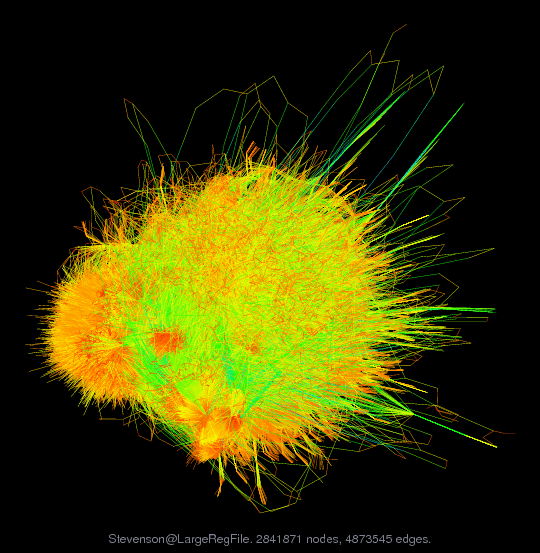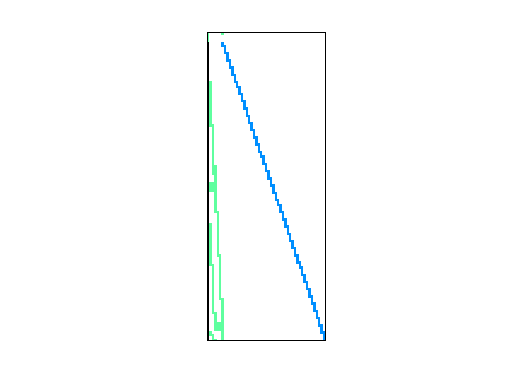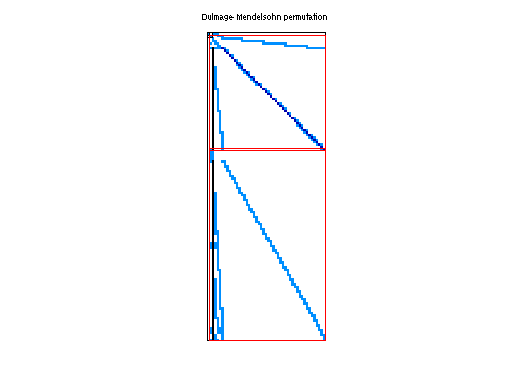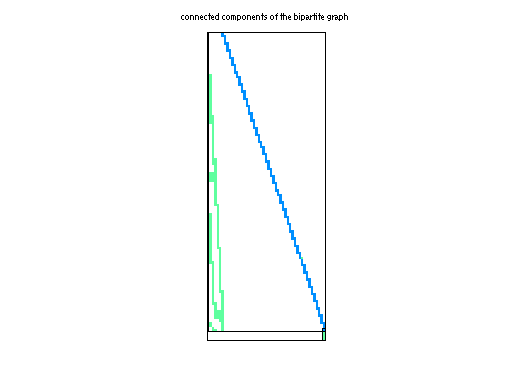
Matrix: Stevenson/LargeRegFile
Description: large register file, digital circuit optimization
 |
| (bipartite graph drawing) |
 |
 |
 |
| Matrix properties | |
| number of rows | 2,111,154 |
| number of columns | 801,374 |
| nonzeros | 4,944,201 |
| structural full rank? | yes |
| structural rank | 801,374 |
| # of blocks from dmperm | 32,778 |
| # strongly connected comp. | 2 |
| explicit zero entries | 0 |
| nonzero pattern symmetry | 0% |
| numeric value symmetry | 0% |
| type | real |
| structure | rectangular |
| Cholesky candidate? | no |
| positive definite? | no |
| author | J. Stevenson |
| editor | T. Davis |
| date | 2010 |
| kind | circuit simulation problem |
| 2D/3D problem? | no |
Notes:
Circuit optimization for digital circuits. John Peter Stevenson, Stanford.
LargeRegFile is a matrix representing an optimization problem.
Specifically, it is a geometric program, a kind of convex optimization
problem. The matrix entries are the exponents found in the geometric
program constraints; specifically, this matrix is a portion of the
input required by mskexpopt:
http://docs.mosek.com/6.0/capi/node008.html
This matrix represents a digital circuit. The circuit is a large
register file: 256 registers, 64 bits each, 2 read ports, 1 write port.
The optimization problem is to minimize circuit delay, subject to
constraints on energy cost and area cost. The optimization variables
are the transistor size, the supply voltage, and the threshold voltage.
The circuit optimization method is described by Patil, et. al.: Robust
energy-efficient adder topologies. In ARITH07: Proceedings of the 18th
IEEE Symposium on Computer Arithmetic, pages 16-28, Washington, DC,
USA, 2007. IEEE Computer Society.
| Ordering statistics: | result |
| nnz(V) for QR, upper bound nnz(L) for LU, with COLAMD | 916,786,879 |
| nnz(R) for QR, upper bound nnz(U) for LU, with COLAMD | 4,902,416 |
For a description of the statistics displayed above, click here.
Maintained by Tim Davis, last updated 12-Mar-2014.
Matrix pictures by cspy, a MATLAB function in the CSparse package.
Matrix graphs by Yifan Hu, AT&T Labs Visualization Group.